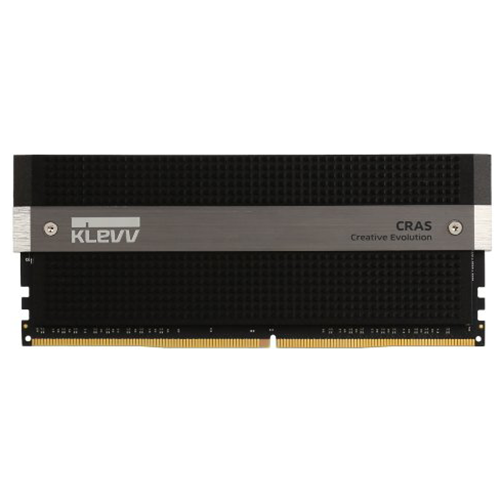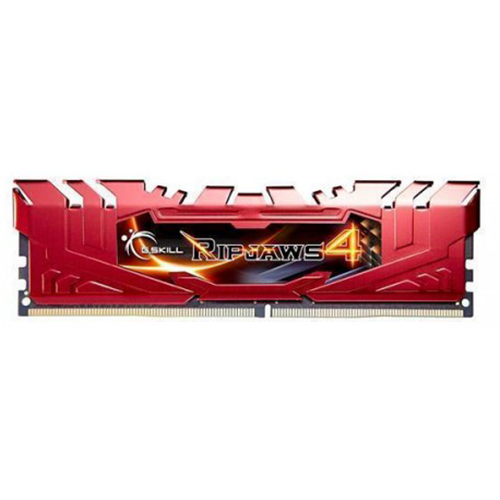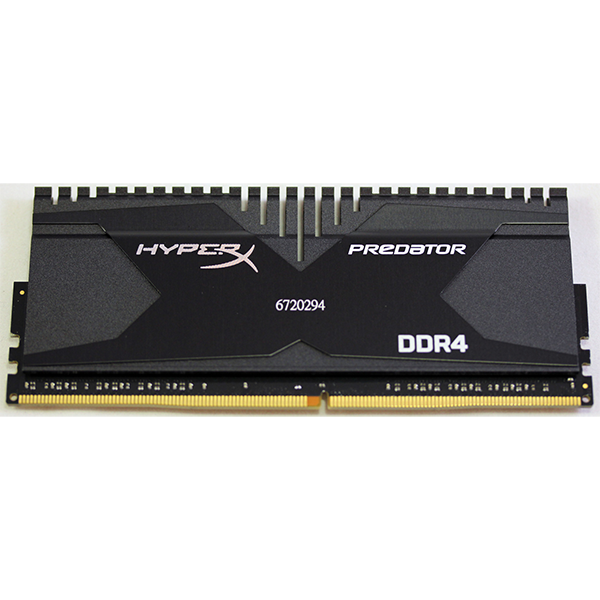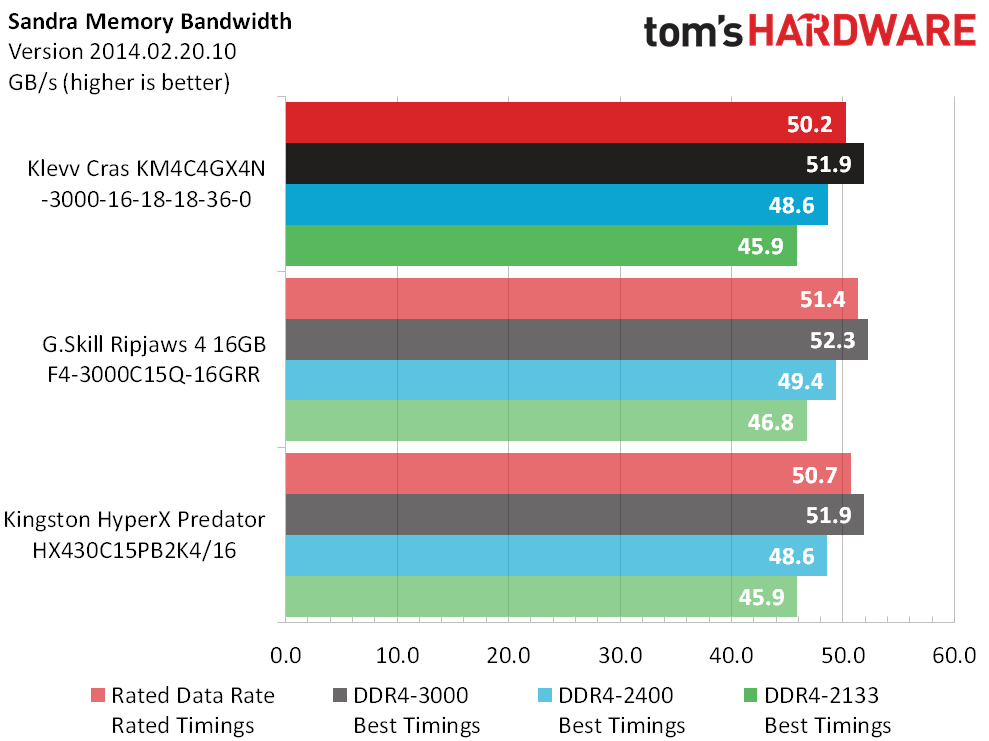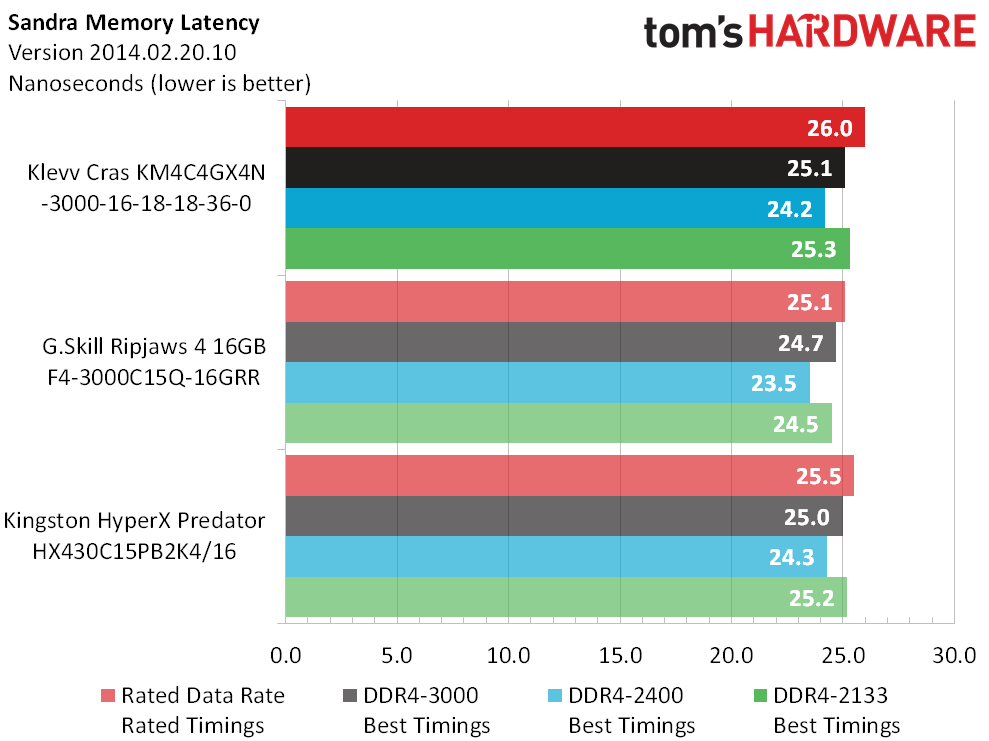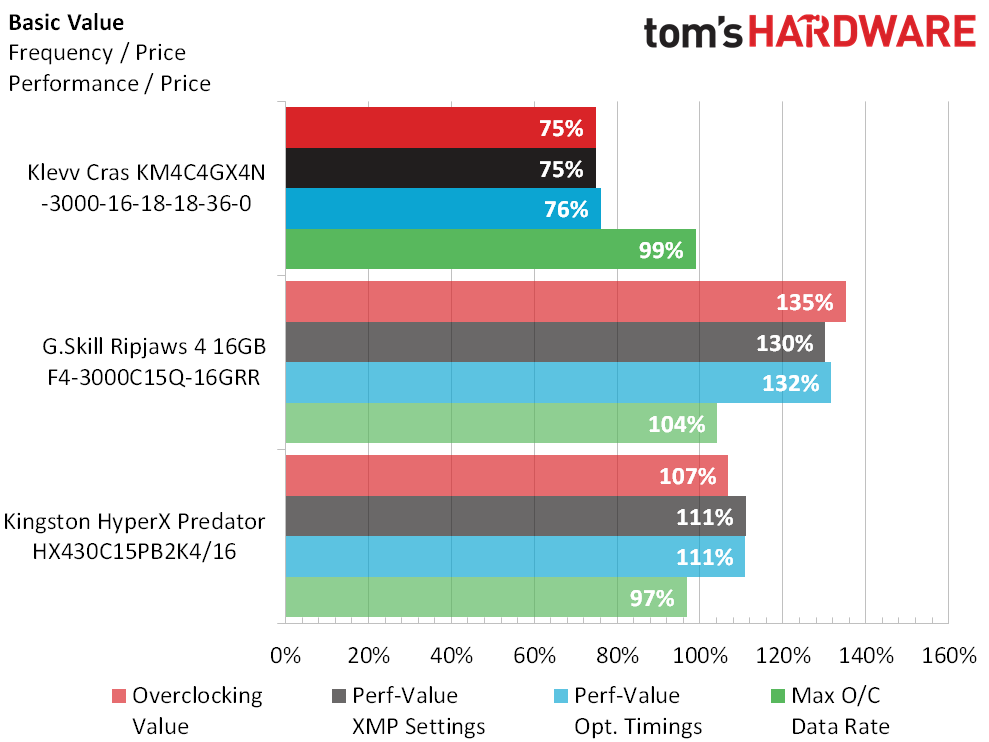Klevv Cras 16GB DDR4-3000 Memory Review
Why you can trust Tom's Hardware
Results!
As we continue to use the same test platform and software from our earliest DDR4 round-up, it’s important to remember that DDR4-2400 runs at 9x the memory controller frequency, and that DDR4-3000 uses that same ratio with an overclocked BCLK. Using a 4:3 ratio between the memory controller and CPU core-side BCLK and x2 for DDR data rate, the full multiple for DDR4-2400 is 9 x 4:3 x 100 x 2, while the full multiple of DDR4-3000 is 9 x 4:3 x 125 x 2. Without extreme tuning tactics, the highest stable memory multiplier for Haswell-E on most motherboards is 10, allowing DDR4-2666 at 100MHz BCLK and DDR4-3333 at 125MHz BCLK.
The highest sustainable BCLK on this CPU is 132MHz, which boosts DDR4-3000 to a data rate of 3168 MT/s. Going beyond that requires selection of the next stable memory multiplier, followed by clocking down from DDR4-3333 to the highest stable data rate.
Klevv's Cras DDR4-3000 kit clocks past Kingston’s HyperX Predator, yet doesn’t quite reach the highs of G.Skill’s DDR4-3000 C15. It also doesn't scale past 3168 MT/s, which means there's no need to try the next-highest (DDR4-3333) ratio. Proving that its rated timings are conservative, Klevv's Cras was even stable at 3144 MT/s and reduced 16-16-16-32 latencies.
XMP timings hurt Klevv's Cras a little in Sandra's Bandwidth benchmark, but it easily catches up to Kingston’s HyperX Predator when timings are optimized.
Lower is better for latency, and we again see where a slight loss at XMP defaults gives way to a performance tie after timing optimization.
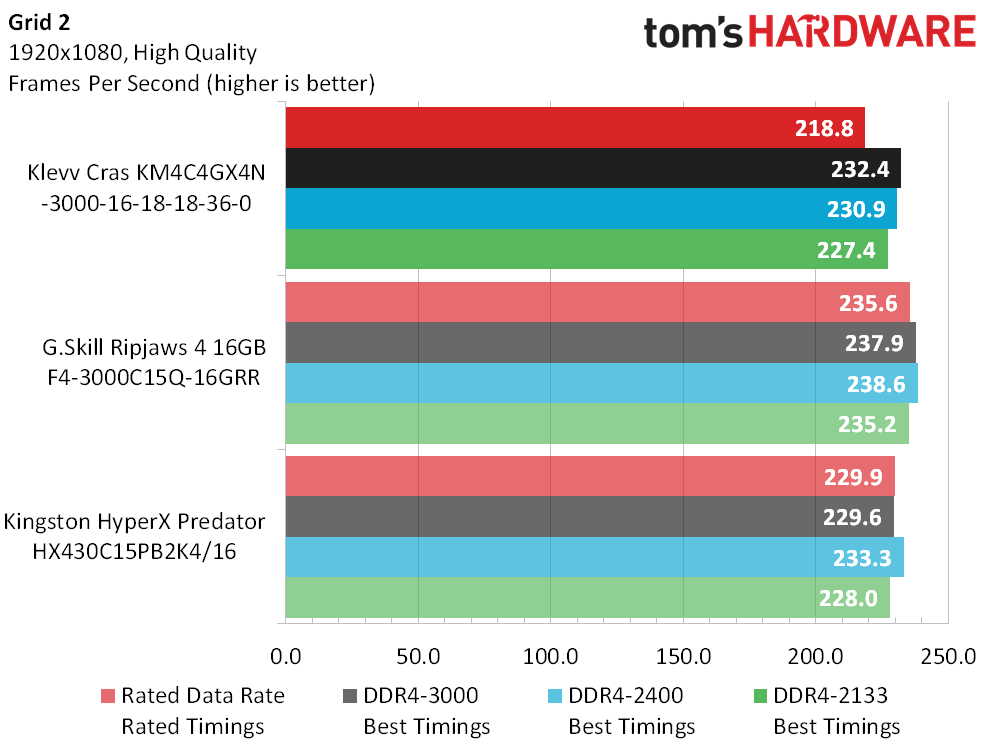
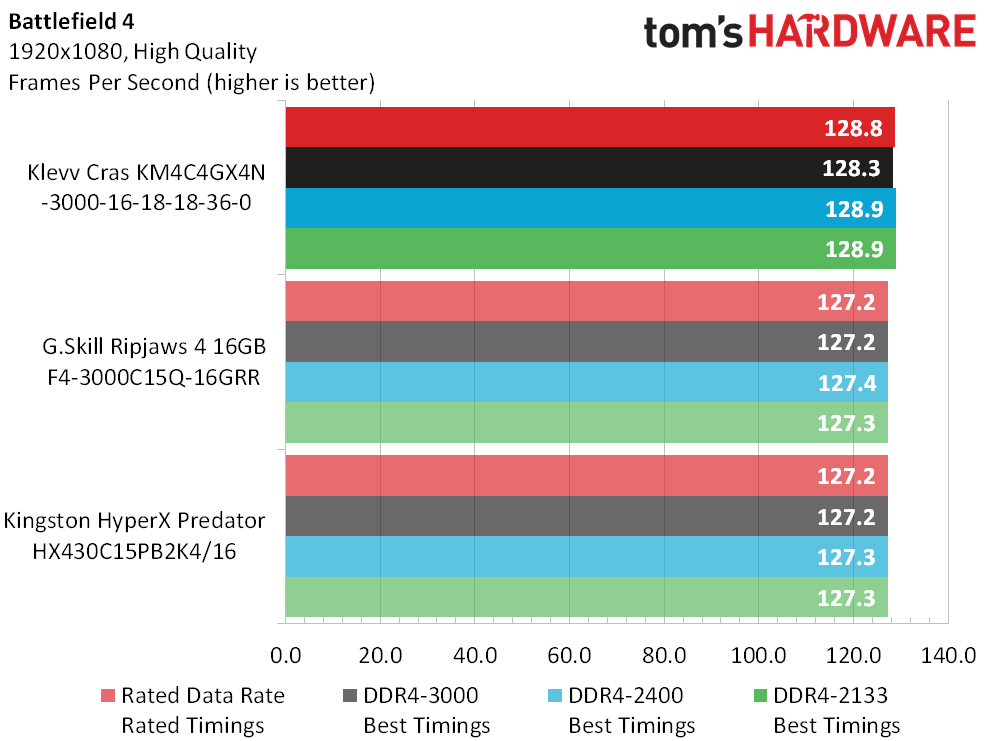
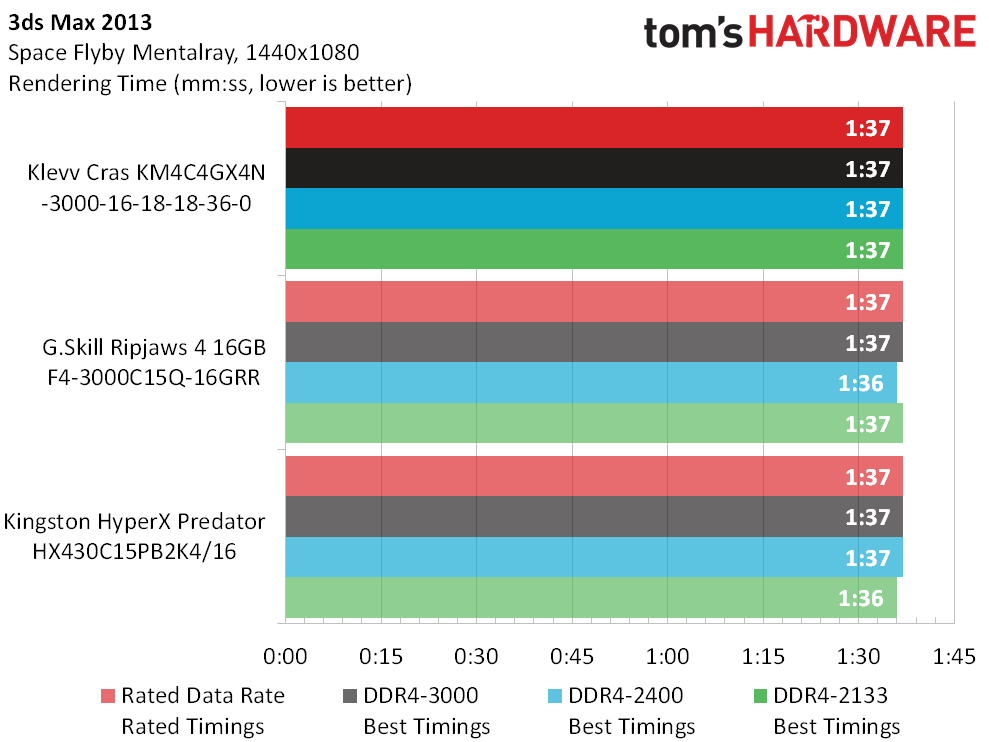
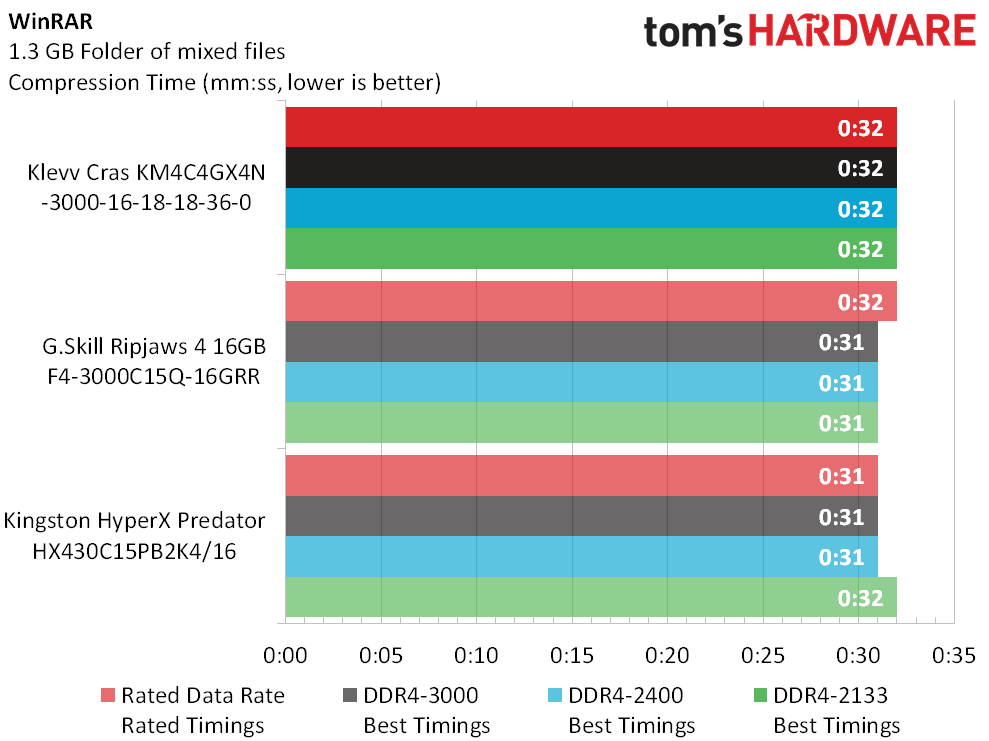
Grid 2 is particularly harsh on Klevv’s XMP timings, and a restart didn’t fix this benchmark. Optimized timings did though, allowing the Cras DDR4-3000 to catch its Kingston rival. Other benchmarks were barely affected and, come to think of it, we don’t know anyone who could see the difference between 219 and 232 FPS.
The only disconnect is price. For $150 more than its closest rival (Kingston's Predator), Klevv's Cras adds slightly fancier heat spreaders, eight LEDs and a piece of acrylic to show off the LEDs. It also overclocks a little better, but not by enough to catch G.Skill’s cheaply-clad Ripjaws 4.
Get Tom's Hardware's best news and in-depth reviews, straight to your inbox.
-
blackmagnum DDR4 is not ready for prime-time and this maker blings the looks and jacks up the price to match, thus scaring away price weary up-graders. Am I on the right track?Reply -
shrapnel_indie ReplyDDR4 is not ready for prime-time and this maker blings the looks and jacks up the price to match, thus scaring away price weary up-graders. Am I on the right track?
They do come off as pricey to me... in cases, pricier than their competition, in both DDR3 and DDR4 modules. -
Crashman If you're paying hundreds of dollars to dress up your system, these modules could up your game. I just can't give them an overall recommendation to the more value-oriented buyers that read most of these reviews :)Reply -
obababoy ReplyIf you're paying hundreds of dollars to dress up your system, these modules could up your game. I just can't give them an overall recommendation to the more value-oriented buyers that read most of these reviews :)
Haha "game". That term outside of its literal meaning does not exist when you are talking about building and showing off a computer. The only way to up your "game" is to ditch your computer so lets just keep to nerd fest terms. I am more comfortable here anyways. With that said these and all of DDR4 is way overpriced right now. Not worth it.
-
Newbbuilder11 Saw these DIMM's at PAX south, they aren't that bad actually. They are a bit flashy for my taste but overall they can handle there own. Since they are the first DIMM's of DDR4 I've handled in a PC I can't say whether or not they are the best.Reply
I also remember touching one of the display DIMM's and a security guy got mad at me... but one of the KLEVV people said it was alright and let me see a pair of showcase DIMM's and they feel nice, but again I have not handled any other DDR4 DIMM's besides this one. -
Newbbuilder11 As well, I've tested these on a X99 platform(only platform that can use these anyways.)Reply
Guestimated specs as to what I remember these where on
Intel Core I7 5820k (Liquid Cooled)
KLEVV DDR4 RAM
X99 Motherboard(By ASUS i think..)
GTX 980(forgot company)
This is basically what I think where in these systems.. -
Sabishii Hito G.Skill DDR4 3000C15 modules aren't so special these days, I'm 99.9% sure the sample used in the review is a lot stronger than retail.Reply
